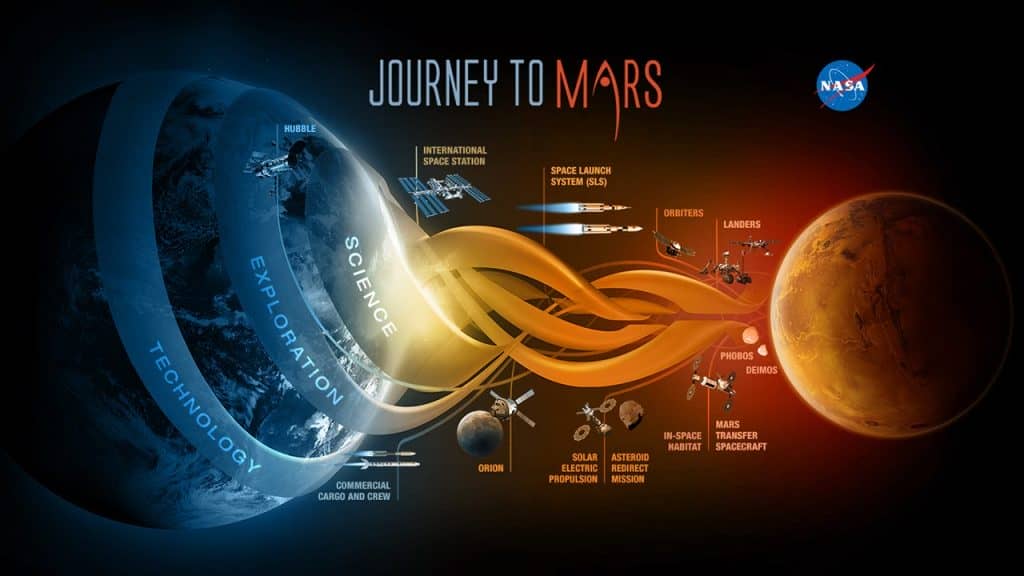This week is Apollo Week with the celebrations of 50 years passing since the Apollo mission going on! Keeping in line with the spirit of space exploration, we have put together a list of challenges that NASA will be facing when it comes to making its way to the Red Planet and how the moon can appreciably help us to get ready for Mars.
The First Challenge – The Orbit
You can’t just point and shoot when it comes to space. Rocket scientists have to rely on a maneuver known as Hohmann transfer orbit for sending a vehicle from a small circular orbit to a bigger orbit. The transfer orbit needs to be precisely timed so that when the spacecraft leaves Earth, it reaches the destination orbit at the same time that Mars reaches the same position. Earth and Mars only make it to the right orbital alignment for a Hohmann transfer to take place every 26 months for allowing a six-month journey that is survivable.
Going back to the moon helps because it is relatively quite easy for a vehicle that is Mars-bound to make a ‘stop by’ Gateway at its very high orbit at a lower cost in terms of propellant and velocity change.
The Second Challenge – The Long Away Mission
The mission is just too long. Astronauts will have to remain on the Red Planet or orbit it for months at a time. A single Mars mission, from the start till the end, will take more than two years. That is actually quite a long time period to be away from the home planet while breathing recycled air. There will be a forty-minute lag in sending messages to Earth and receiving responses back.
NASA is hoping to acquire more knowledge about how astronauts psychologically deal with spending extended time on the moon. Scientists will also be gauging the effects of microgravity and space radiation on astronauts.
The Third Challenge – Sending Supplies
In order to deliver big payloads, larger rockets will be required. A Mars lander and the trans-Martian cruise vehicle will have to be built using the payloads that are delivered into the orbit by NASA’s Space Launch System (SLS) rocket and Orion spacecraft over the course of many missions.
NASA will be developing this deep-space capability by relying on the SLS and Orion vehicles for constructing the Gateway lunar orbiting platform and habitats that are based on the moon.
The Fourth Challenge – Sending More Supplies
Resupplying at Mars is not an easy option. In fact, Mars explorers will have to wait for two years, most likely, and this implies that enough food and fuel must either be brought from Earth or created on Mars.
The lunar base can become the proving ground for technologies that will be used for producing the propellant fuel from water ice that is mined from under the moon’s surface.
The Fifth Challenge – A Better Space Station
A more versatile space station will be needed. While NASA along with its dozens of aerospace contractors carry on with the work on SLS, a new space-station sized cruiser known as Deep-Space Transport will have to be created to allow for the shuttling of crews between Mars and Earth.
The key systems for DST, including radiation shielding and the closed-loop-life-support will undergo flight testing on Gateway.
The Sixth Challenge – Next-Gen Landers
Making it to Mars means that there will be a plethora of expected and unforeseen problems. The DST will only be able to make it to the orbit of Mars, thus giving rise to the need of a big lander that will be capable of performing a soft touchdown on Mars. This lander will have to be built in space, and Lockheed Martin has already proposed a big space plane that will rely on SLS rocket for launching from Earth.
NASA is hopeful that new moon missions will help it to speed up the mission to Mars by expediting the development of the technologies that are required to get there.

